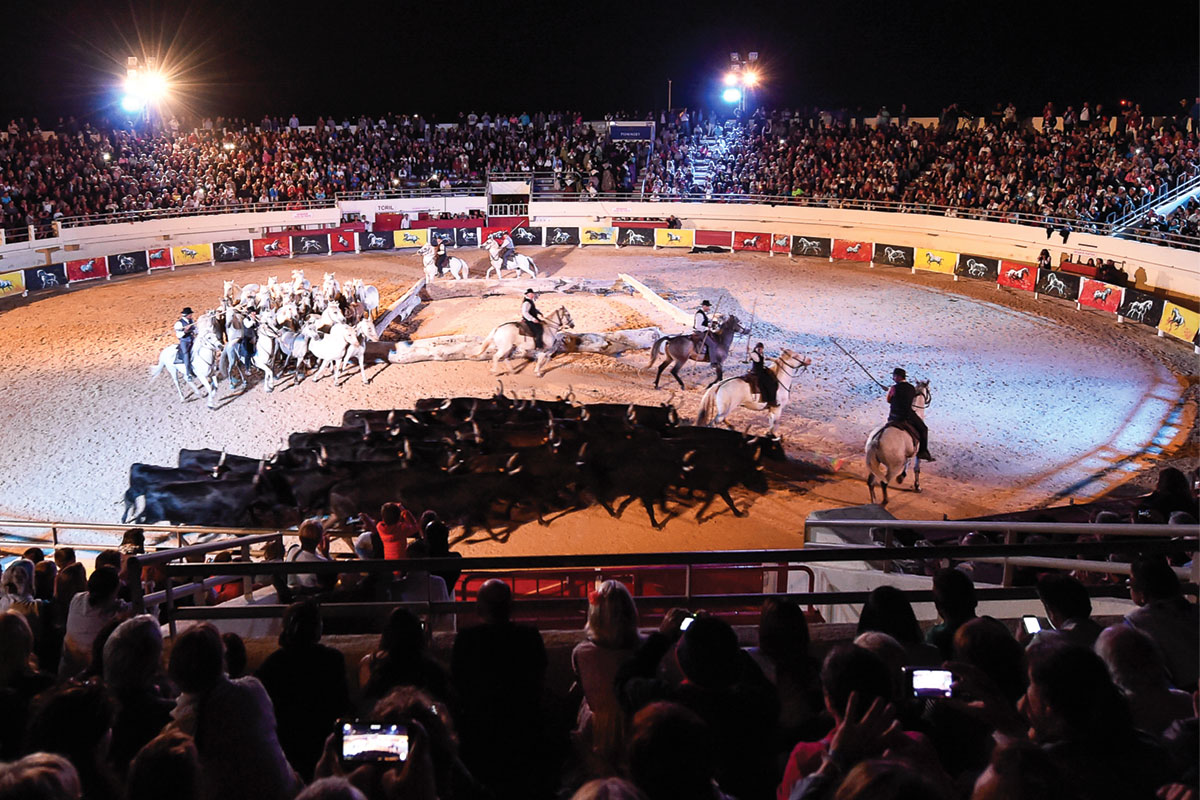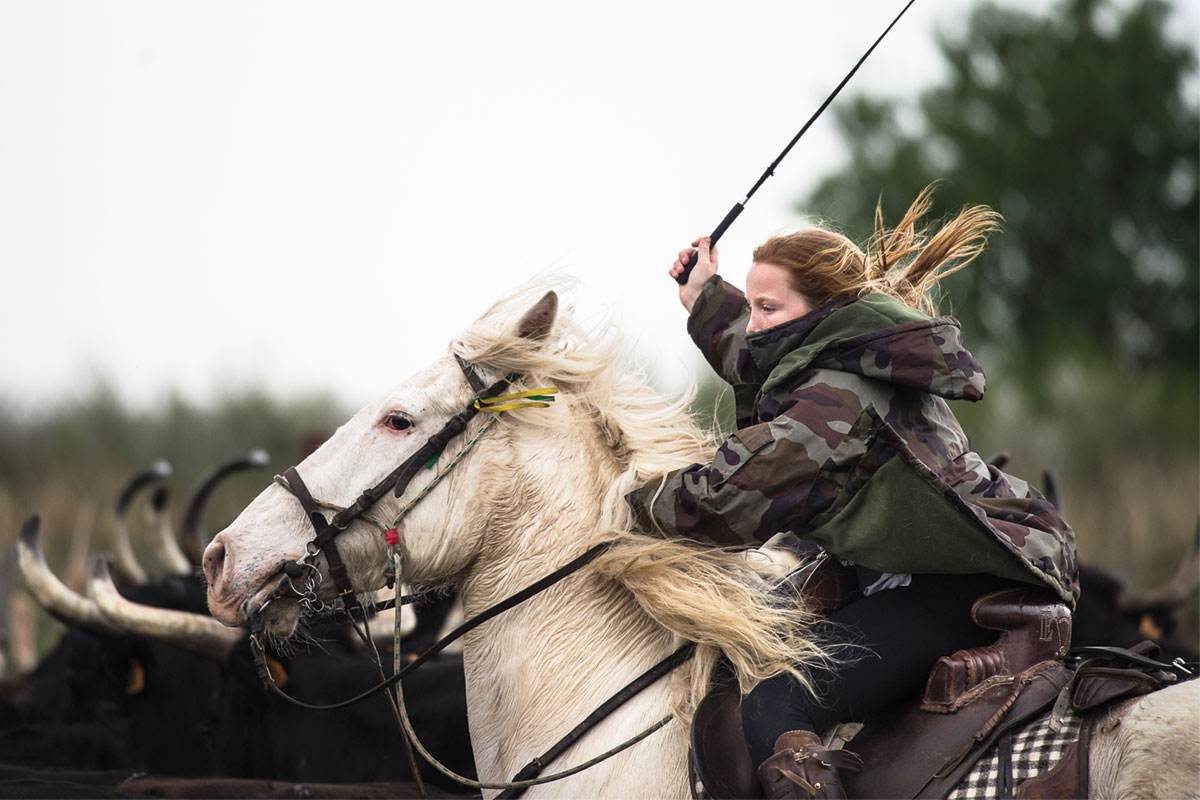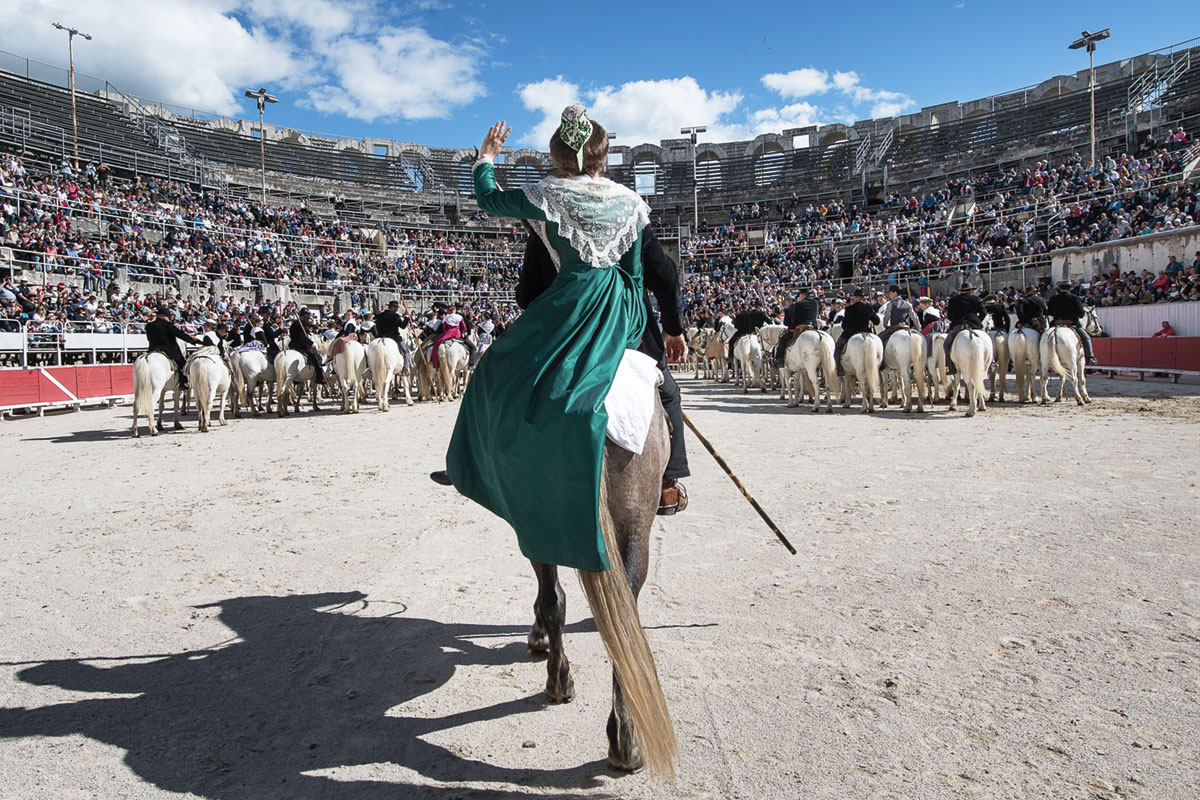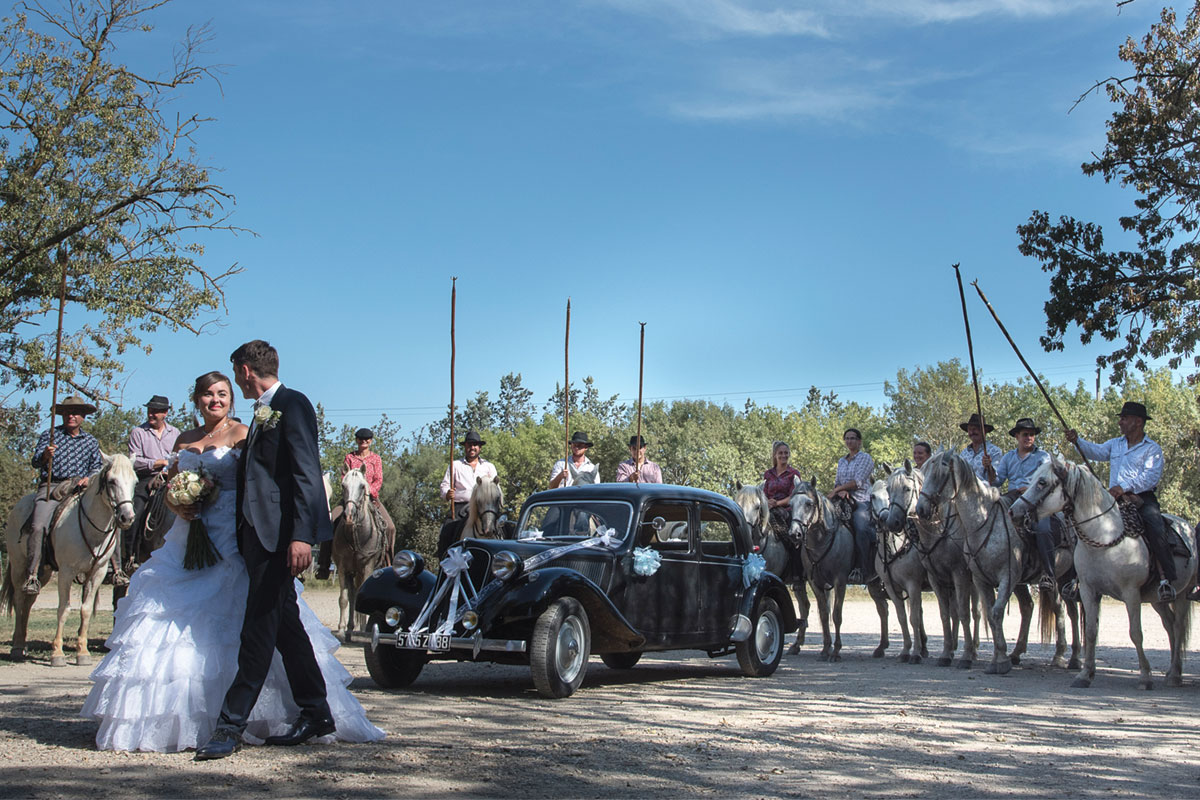
Imagine yourself staying in a home built by the Knights Templar, and in the afternoon sitting with 20,000 people high in an ancient amphitheatre built by the Romans, watching age-old races between a bull and a man in a competition that dates from A.D. 1402.
The ancient city of Arles in the Provencal region of France is the home of incredible history. This is the city where the Romans built, among other projects, the amphitheatre (les Arènes d’Arles) in A.D. 90, which is still in use today. The city is on one of the routes of the Camino de Santiago (Path to Santiago), a pilgrimage route to the tomb of the apostle St. James in the city of Santiago, dating back to A.D. 814. Arles is also the city that inspired over 300 of Vincent Van Gogh’s paintings (and the place where he severed his own ear, but that’s another story). It’s the home of the fantastic flamenco band, the Gipsy Kings, and most importantly for us and this tale — Arles is the central home of the Camargue bulls and the Camargue horses (pronounced cam-AHG).

The Bulls, the Horses, the Herdsmen
Raised for centuries in semi-feral conditions in the Camargue marshlands of southern France (designated a World Heritage Site in 1986), the black Camargue cattle are critical to the health of the grasslands and wetlands. The cattle are used for the traditional sport of course camarguaise. The cattle are kept in manades and herded by mounted gardians. Unlike the Iberian-style bullfighting where the bull dies, the Camargue bulls can have a career spanning 20 or more years.
Course Camarguaise (Camargue Races)
From the beginning of April until the end of October, the major races take place in Arles, in the Arles Amphitheatre. The course camarguaise is a bloodless bull-running where runners, called raseteurs, compete to snatch a rosette off the horns. It’s safe for the bulls, but hellishly dangerous for the raseteurs. The bulls are herded through the streets to the arena (the abrivado) by mounted gardians and returned to the manade in the same way (the bandido) amidst a great deal of ceremony.

Camargue Horse
France has long been famous for her horses, and the tough Camargue is one of the reasons. An ancient breed indigenous to the area, it is considered one of the oldest breeds of horses in the world. The creamy white Camargue horse has always been central to the culture, from leading religious processions to the famous games.
For thousands of years, these small horses have run wild in the harsh Camargue wetlands of the Rhône delta. There they developed the stamina, hardiness and agility for which they are known today.
Mature Camargue horses are always white with black skin. They are born black or dark brown, and by the time they are around five, their hair is white. They are small horses, standing 13.1 to 14.3 hands and weighing 770 to 1,100 lbs. They are tough, intelligent and prized for their calm nature.
The Gardians
France has cowboys—damn good ones known as gardians — who are steeped in the ancient traditions of the region. Like Canadian ranchers, these people are in the fight of their life to save their critical ranching region from developers. Unlike Canadian ranchers whose main tool of cattle handling is the lariat, gardians use a long pole with a fixed trident on the end to control the cattle. Legend says this trident was a gift from Poseidon (God of the sea, earthquakes and horses).
The gardians have their origins in the gardo-besti (cattle keepers) of the Middle Ages (A.D. 500–1350) and follow a code of honour like the chivalry and courtesy of the knights of old. The Confrérie des Gardians (Brotherhood/Order of the Gardians) was founded in 1512.
To diversify their income, the ranchers, called manadiers, take in paying guests, treating them to tours of the region on the white Camargue horses, plus many other events. These ranches are generational treasure troves, and like the prized Camargue cattle and horses, owe their very survival to these protective manadiers.
“In the south of France, 100 herds are devoted to the breeding of Camargue bulls. It has nothing to do with the Spanish bullfighting culture where the bulls are killed in an arena. In the Camargue region, the bull is a star and it lives a long life.”

Experience the Camargue Region
In this famous region of Provence, many of the bull and horse breeders offer the opportunity to explore areas from the back of a Camargue horse. It is possible to stay at family-owned ranches where you can ride the famous horses and experience this ancient culture. For more info, visit arlestourisme.com
Translation, interpretation and research by TERRI MASON
Original article written and photographed by ROGER JOB and GAELLE HENKENS

